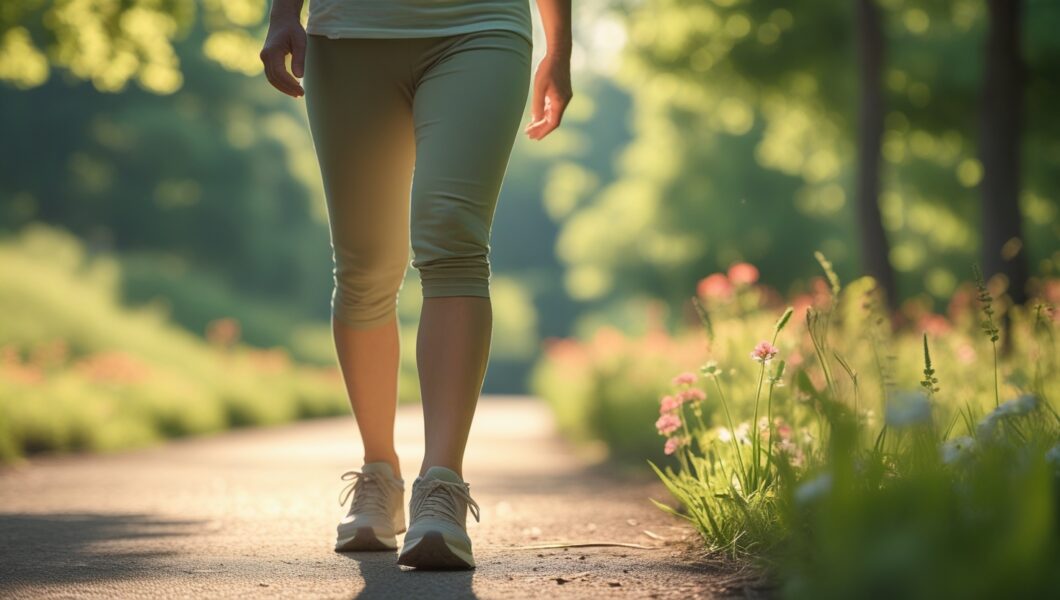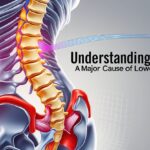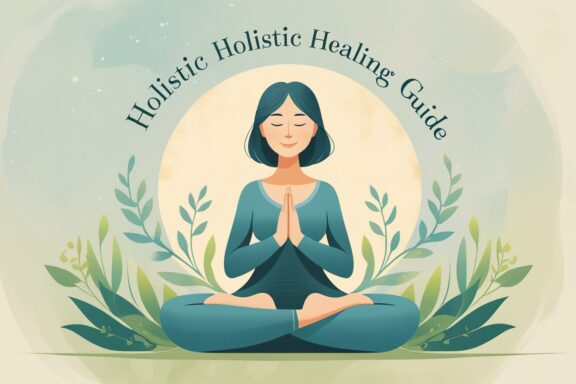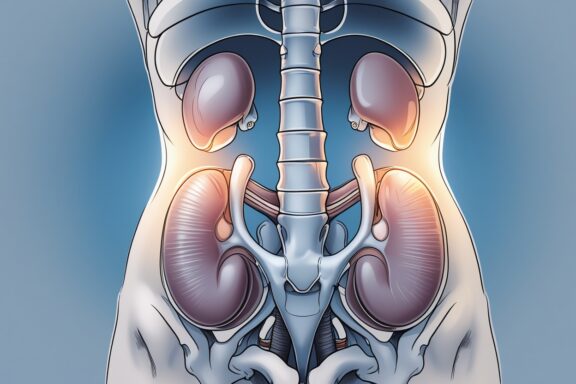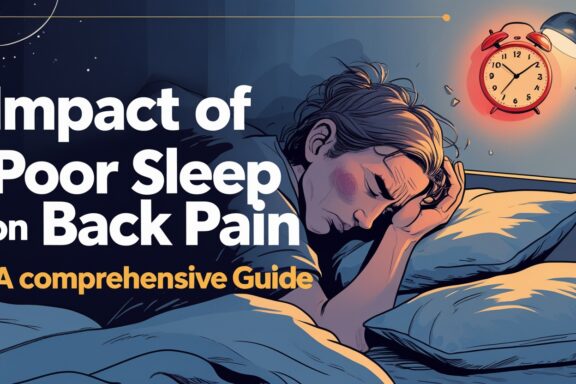Ouch! There it is again—that nagging lower back ache that's been your unwelcome companion for weeks, maybe months. You're not alone in this struggle, friend. According to the American Chiropractic Association, approximately 31 million Americans experience lower back pain at any given time. But here's the kicker: one of the most effective remedies might be as simple as lacing up your sneakers and taking a stroll.
Walking your way out of lower back ache isn't just some feel-good fantasy—it's backed by solid science and countless success stories. This gentle, accessible form of exercise can be your ticket to freedom from that persistent pain that's been cramping your style. Ready to discover how putting one foot in front of the other can transform your relationship with back pain? Let's dive in!
Why Your Back is Crying for Help
The Modern Lifestyle Culprit
Honestly, our backs weren't designed for the 21st-century lifestyle we've adopted. Think about it—we're hunched over computers for eight hours straight, then slouch on couches binge-watching Netflix. Our spines are basically screaming, “Help me!” but we keep ignoring the signals.
The human spine is an incredible engineering marvel, consisting of 33 vertebrae, countless muscles, ligaments, and discs working in harmony. However, when we spend excessive time in static positions, these structures become stiff, weak, and irritated. The result? That all-too-familiar lower back ache that makes getting out of bed feel like climbing Mount Everest.
Understanding the Pain Cycle
Lower back pain often creates a vicious cycle that's tougher to break than a bad habit. When your back hurts, you naturally want to rest and avoid movement. Makes sense, right? Wrong! This instinctive response actually makes things worse by allowing muscles to weaken and joints to stiffen further.
Research published in the Journal of the American Medical Association shows that prolonged bed rest for lower back pain can actually delay recovery and increase the risk of chronic pain. The key is finding the sweet spot between rest and gentle movement—and that's where walking your way out of lower back ache becomes pure gold.
The Science Behind Walking for Back Pain Relief
How Walking Works Its Magic
Walking might seem too simple to be effective, but don't let its simplicity fool you! This low-impact exercise is like a gentle massage for your spine, promoting blood flow, flexibility, and strength simultaneously. When you walk, your body naturally engages the core muscles that support your spine, creating a built-in brace that stabilizes your lower back.
The rhythmic motion of walking also stimulates the production of endorphins—your body's natural painkillers. These feel-good chemicals don't just mask the pain; they actually help reset your nervous system's response to discomfort. Plus, walking increases the flow of nutrients to spinal discs, which is crucial since these structures don't have their own blood supply.
Evidence from the Experts
Dr. Stuart McGill, a renowned spine biomechanics researcher, emphasizes that “walking is one of the best exercises for the spine because it's what the human body was designed to do.” His research, along with numerous studies, demonstrates that regular walking can reduce lower back pain intensity by up to 40% within just a few weeks.
A groundbreaking study in the Clinical Journal of Pain followed 240 participants with chronic lower back pain who incorporated daily walks into their routine. The results were impressive: 78% reported significant pain reduction, and 65% were able to reduce their reliance on pain medications. Now that's what I call walking your way out of lower back ache!
Getting Started: Your Walking Prescription
The Perfect Walking Formula
Alright, let's get practical! Starting your journey to walk away from back pain doesn't require a PhD in exercise science—just some common sense and consistency. Here's your personalized walking prescription:
Week 1-2: The Gentle Introduction
- Duration: 10-15 minutes daily
- Intensity: Comfortable pace (you should be able to hold a conversation)
- Frequency: 5-6 days per week
- Focus: Getting your body accustomed to regular movement
Week 3-4: Building Momentum
- Duration: 20-25 minutes daily
- Intensity: Moderate pace (slightly breathless but comfortable)
- Frequency: Daily
- Focus: Strengthening supporting muscles and improving endurance
Timing is Everything
When should you walk? Well, that depends on your pain patterns and lifestyle. Many folks find that a gentle morning walk helps “unlock” their spine after a night's rest, while others prefer evening strolls to decompress from the day's stress. The key is consistency—your back doesn't care if you're a morning lark or a night owl, as long as you show up regularly.
However, avoid walking immediately after waking up if your pain is severe in the mornings. Give your spine about 30 minutes to naturally decompress before heading out. And here's a pro tip: if you experience increased pain during or after walking, you might be overdoing it. Scale back and gradually increase as your tolerance improves.
Mastering the Art of Pain-Free Walking
Proper Walking Technique for Back Health
Walking might be second nature, but when you're dealing with back pain, technique matters more than you think. Poor walking form can actually aggravate your symptoms, so let's nail down the basics:
The Foundation: Your Posture
- Stand tall with your ears over your shoulders, shoulders over your hips
- Engage your core gently (imagine someone's about to playfully poke your belly)
- Keep your chin parallel to the ground
- Let your arms swing naturally at your sides
The Movement: Your Stride
- Take comfortable, natural steps—no need to power-walk like you're late for a meeting
- Land on your heel and roll through to your toes
- Keep your feet pointing straight ahead
- Maintain a steady, rhythmic pace
Common Mistakes That Sabotage Success
Ugh, nothing's more frustrating than putting in the effort only to make things worse! Here are the most common walking blunders that can set back your progress:
The Overachiever's Trap: Going too hard, too fast is like trying to run a marathon when you can barely jog around the block. Your enthusiasm is admirable, but your back needs time to adapt. Start slow and gradually increase intensity—patience pays off in the long run.
The Wrong Gear: Worn-out sneakers or unsupportive footwear can throw off your entire kinetic chain, potentially worsening your back pain. Invest in proper walking shoes with good arch support and cushioning. Your feet are the foundation of your entire body—treat them well!
Advanced Strategies to Maximize Results
Incorporating Terrain Variety
Once you've mastered basic walking, it's time to spice things up! Different terrains challenge your body in unique ways, promoting better balance, strength, and coordination. However, when you're walking your way out of lower back ache, progression should be gradual and mindful.
Beach or Sand Walking: The unstable surface of sand forces your core muscles to work overtime, providing excellent strengthening benefits. However, start with short distances as it's more demanding than regular walking. The resistance also helps improve circulation and reduce inflammation.
Hill Walking: Gentle inclines naturally engage your glutes and hamstrings—two muscle groups crucial for lower back support. Start with mild slopes and gradually work your way up. Avoid steep declines initially, as they can place additional stress on your spine.
Adding Complementary Movements
Walking alone is fantastic, but combining it with specific exercises can accelerate your recovery. Try incorporating these simple movements during your walk:
Walking Meditation: Focus on your breath and the rhythm of your steps. This mindfulness approach can help reduce the psychological component of chronic pain while promoting relaxation.
Gentle Stretching Stops: Every 10-15 minutes, pause for simple stretches like calf raises, gentle back extensions, or hip circles. These mini-breaks prevent stiffness and maintain mobility throughout your walk.
Overcoming Common Obstacles
When Weather Won't Cooperate
Let's face it—Mother Nature doesn't always support our wellness goals. Rain, snow, extreme heat, or bitter cold can derail even the best intentions. But don't let weather be your excuse to skip walking your way out of lower back ache!
Indoor Alternatives That Work:
- Mall walking (many malls open early for walkers)
- Treadmill walking with proper form
- Hallway or stairwell walking in apartment buildings
- YouTube walking workouts (yes, they exist and they're surprisingly effective!)
The key is maintaining consistency regardless of external conditions. Your back doesn't take weather days off, so neither should your walking routine. Besides, there's something oddly satisfying about sticking to your commitment despite less-than-ideal circumstances.
Dealing with Initial Discomfort
Here's the truth bomb: you might experience some initial discomfort when starting your walking routine. This doesn't mean you're making things worse—it's often your body's way of adapting to new movement patterns. However, it's crucial to distinguish between normal adaptation discomfort and pain that signals you should stop.
Normal Adaptation Signs:
- Mild muscle soreness 24-48 hours after walking
- Slight stiffness that improves with gentle movement
- Fatigue that resolves with rest
Warning Signs to Stop:
- Sharp, shooting pain during or immediately after walking
- Numbness or tingling in your legs
- Pain that worsens progressively over several days
Frequently Asked Questions
How long does it take to see results from walking for back pain? Most people notice some improvement within 2-3 weeks of consistent walking, with significant pain reduction typically occurring within 4-6 weeks. However, everyone's timeline is different, so don't get discouraged if your progress seems slower than expected.
Can I walk if I have a herniated disc? Generally, yes! Walking is often recommended for herniated discs as it promotes healing through improved circulation and gentle movement. However, always consult your healthcare provider before starting any exercise program with a diagnosed disc issue.
What if walking makes my pain worse initially? Some initial discomfort is normal, but increasing pain isn't. If walking consistently worsens your symptoms, reduce the duration and intensity, check your walking form, and consider consulting a physical therapist or healthcare provider.
Should I walk every day or take rest days? For back pain relief, daily gentle walking is typically beneficial. Unlike high-intensity exercise, walking is gentle enough for daily practice. However, listen to your body—if you're feeling particularly sore or fatigued, a gentler pace or shorter duration might be more appropriate.
Is walking better than other exercises for back pain? Walking is excellent because it's accessible, low-impact, and functional. While other exercises like swimming, yoga, or strength training can also be beneficial, walking has the advantage of being something you can do anywhere, anytime, without special equipment or training.
Final Thoughts: Your Journey to a Pain-Free Back
Walking your way out of lower back ache isn't just about the physical act of putting one foot in front of the other—it's about reclaiming your life from pain's grip. Every step you take is a small victory, a declaration that you're actively participating in your recovery rather than passively suffering.
The beauty of this approach lies in its simplicity and accessibility. You don't need expensive equipment, gym memberships, or complex schedules. Just you, some comfortable shoes, and the determination to prioritize your health one step at a time. Remember, consistency trumps intensity every single time when it comes to walking your way out of lower back ache.
Your back pain didn't develop overnight, and it won't disappear overnight either. But with patience, persistence, and the right approach, you can absolutely walk yourself toward a more comfortable, active life. The path to recovery is literally beneath your feet—so lace up those shoes and take that first step. Your future pain-free self is waiting at the end of this journey, and trust me, the view from there is absolutely worth it!

